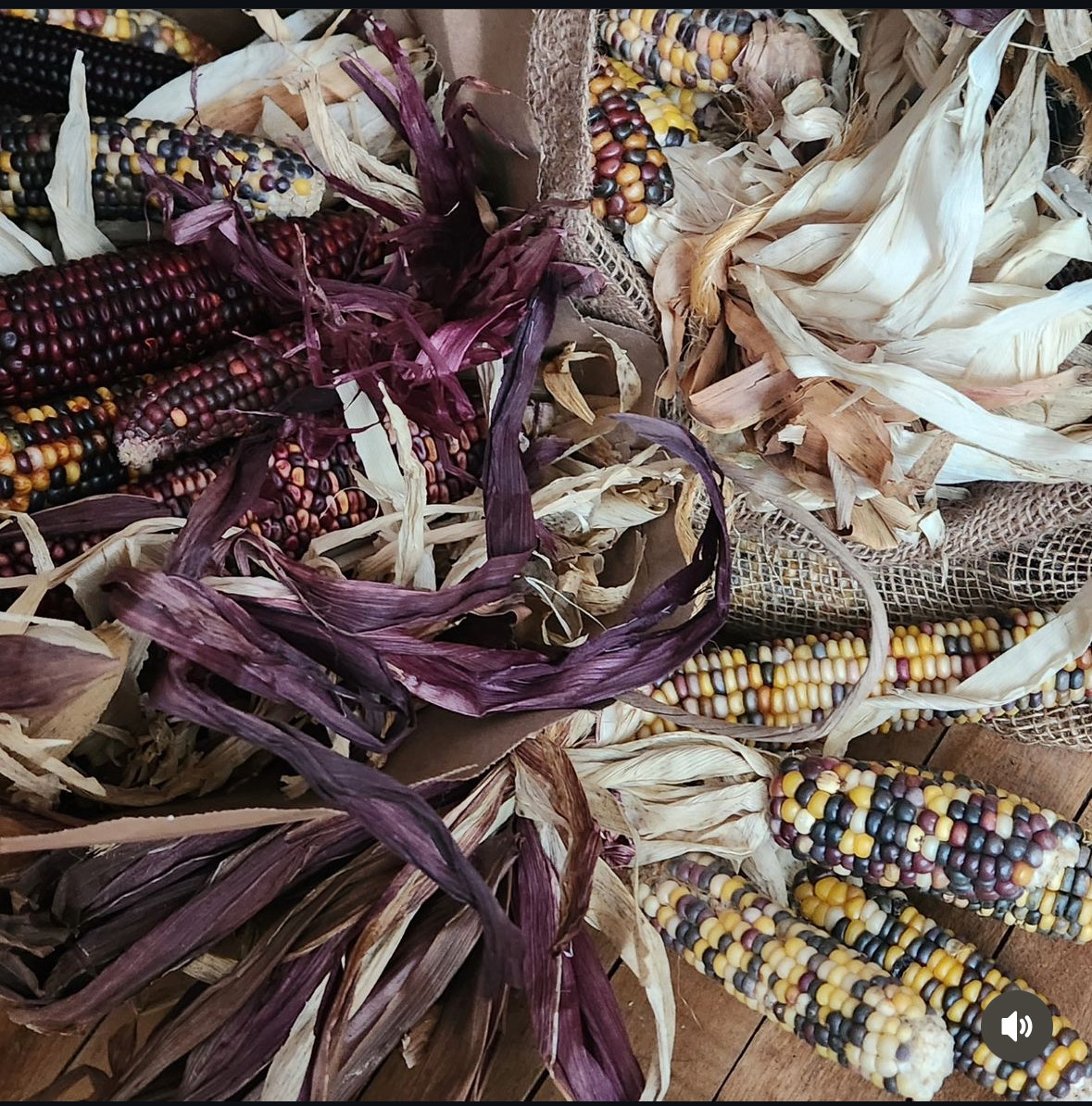The Future of American Indigenous Foods
Finding our Future through Our Past
Tera John

What are (those)?” It was a simple question that could’ve been dismissed with a simple answer. I had a handful of sufficient, concise answers on hand: ‘heirloom beans, ‘organic produce, ‘seeds I helped grow… How I chose to answer: ‘… kind of a big question!’ ‘These seeds were carried along, sewn in seams and braided into hair, on the forced relocation path from the modern-day Tennessee area… They are Indigenous governance and self-determination, and decolonization, wrapped in love but disguised as a seed…
My older cousin was asking about my most recent social media update. I had posted a couple amateur photos in a feeble attempt to convey gratitude for the abundance overflowing my kitchen countsers. The images showed thousands of heirloom beans, through varying stages of drying and storing, after a full season of cultivation and care. Trail of Tears Beans spilled out beyond the edges of the pictures while my caption flailed at professing my admiration for all this plant holds and teaches. The story of these seeds tells of Indigenous ancestors, before our grandparents had names, safeguarding a way to continue our culture.
By carefully sewing seeds into hems, hope was sown with the youth. With experienced hands, the tools of survival were hidden in braids. With these seeds, that now carry the name of that horrific re-moval, faith was gift wrapped for those that survived to the intended destination.
When I plant and nurture these seeds, I follow their root systems back, through the generational memory of the soil that is my ancestors’ bodies. I can decode the messages of belonging and responsibility as their roots reach down through the layers of sediment and time. I can envision the prophecy of hope and reconnection as their shoots stretch toward the sunlight from under a dark cover of earth.
The traditions and teachings surrounding seed savers often, inadvertently, create historians and cultural memory keepers. Traceable, archeologically evident, exchanges of protected seeds were main-tained; from hand to hand, community to commu-nity, generation to generation. The ancestral knowledge of how to cultivate, process, cook, and honor these plants traveled along with them, and accumulated with each growing season and every generation of caretakers. These seeds carry the stories and memory of how Indigenous peoples have co-evolved through millennia alongside our plant relations, intrinsically connected, together in reciprocity.
The Anishinaabek came to be on the Great Lakes through a prophecy and consequent Great Migra-tion’ from the salt water of the east coast. Instructions were delivered from Creator, that to avoid destruction, we were to move westward to our chosen ground; to the lands where food grows on the water.
That prophecy has guided us to make our homes among the Great Lakes, where Manomin/Wild Rice/ The Sacred Seed traditionally grows in the water-ways. This Sacred Seed is a sustaining gift that will
carry us through the most challenging times. Wild Rice functions as a cultural beacon, as well as anchor.And when cared for, propagates entire ecosystems that we depend on. Manomin carries our histories, spirituality, and is integrated into our identities. The very fabric of who we are is defined by the landscapes and ancestral territories in which Manomin flourishes. I was taught that some Anishinaabek may have forgotten and lost the values of who we are intended to be, but Manomin/The Sacred Seed will always remember.
Can we find the frayed and tattered ends of stories left for us by generations before? Do we have the ability to follow the ‘breadcrumbs’, secretly marking the path back to our Original home? Some call the process of revitalizing traditional lifeways decolonization. Anishinaabek use the term biskaabiiyang; the process of returning to ourselves. Recovering our land-based cultures, identities, and wellness, is about remembering who we are intended to be. It is about stepping into our spiritual and ecological responsibilities and roles as Indigenous stewards of our lands. Reclamation of ancestral lands, waters, and sacred sites is fundamental to preserving land-based practices and lifeways. Biiskaabiiyangs our reclamation involves rolling up our sleeves to live within the earth’s processes and truly becoming a part of her systems. Invigorating our foodways honors the generations before us who protected these teachings and the lands they belong to. It tells the stories of people who have kept this knowledge, lifeways, and land management practices alive. People whose names we may never know, but who were thinking of us. It tells us of the people who are doing tremendous work to preserve and revitalize this knowledge today.
Photo by Hadassah GreenSky
My dream is that, through the process of returning to ourselves, Native people will not only create thriving lives for our own communities, but that we will become leaders once again to help the rest of the world. In the meantime, I keep our seeds, carry our stories, and share our knowledge. Much the same way our ancestors packaged our seeds as tools for our futures, I will package these words of hope for all those who will come after me.

